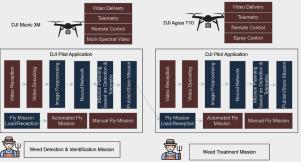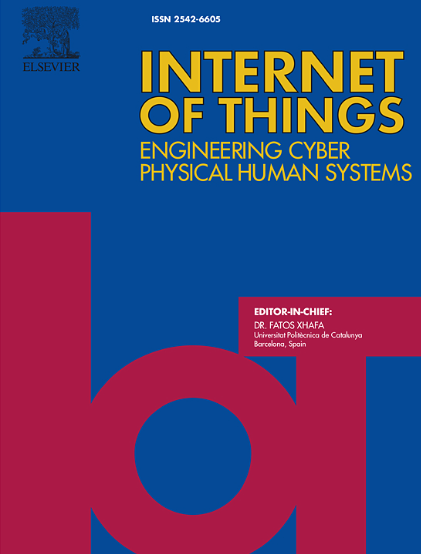AI-based autonomous UAV swarm system for weed detection and treatment: Enhancing organic orange orchard efficiency with agriculture 5.0
IF 6
3区 计算机科学
Q1 COMPUTER SCIENCE, INFORMATION SYSTEMS
引用次数: 0
Abstract
Weeds significantly threaten agricultural productivity by competing with crops for nutrients, particularly in organic farming, where chemical herbicides are prohibited. On Spain’s Mediterranean coast, organic citrus farms face increasing challenges from invasive species like Araujia sericifera and Cortaderia selloana, which further complicate cover crop management. This study introduces a swarm system of unmanned aerial vehicles (UAVs) equipped with neural networks based on YOLOv10 for the detection and geo-location of these invasive weeds. The system achieves F1-scores of 0.78 for Araujia sericifera and 0.80 for Cortaderia selloana. Using GPS and RTK, the UAVs generate KML files to guide diffuser drones for precise, localized treatments with organic products. By automating the detection, treatment, and elimination of invasive species, the system enhances both productivity and sustainability in organic farming. Additionally, the proposed solution addresses the high labor costs associated with manual weeding by reducing the need for human intervention. A comprehensive economic analysis indicates potential savings ranging from 1810 to 2650 € per hectare, depending on farm size. This innovative approach not only improves weed control efficiency but also promotes environmental sustainability, offering a scalable solution for organic and conventional agriculture alike.

基于人工智能的自主无人机群系统用于杂草检测和处理:利用农业 5.0 提高有机橘园效率
杂草与作物争夺养分,严重威胁农业生产率,尤其是在禁止使用化学除草剂的有机农业中。在西班牙地中海沿岸,有机柑橘农场面临着 Araujia sericifera 和 Cortaderia selloana 等入侵物种带来的日益严峻的挑战,这使得覆盖作物管理变得更加复杂。本研究介绍了一种配备基于 YOLOv10 神经网络的无人机群系统,用于检测这些入侵杂草并进行地理定位。该系统对 Araujia sericifera 和 Cortaderia selloana 的 F1 分数分别为 0.78 和 0.80。无人机利用 GPS 和 RTK 生成 KML 文件,引导无人机使用有机产品进行精确的局部处理。通过自动检测、处理和消灭入侵物种,该系统提高了有机农业的生产率和可持续性。此外,拟议的解决方案还能减少人工干预,从而解决人工除草带来的高昂劳动力成本。综合经济分析表明,根据农场规模,每公顷可节省 1810 至 2650 欧元。这种创新方法不仅提高了除草效率,还促进了环境的可持续发展,为有机农业和传统农业提供了可扩展的解决方案。
本文章由计算机程序翻译,如有差异,请以英文原文为准。
求助全文
约1分钟内获得全文
求助全文
来源期刊

Internet of Things
Multiple-
CiteScore
3.60
自引率
5.10%
发文量
115
审稿时长
37 days
期刊介绍:
Internet of Things; Engineering Cyber Physical Human Systems is a comprehensive journal encouraging cross collaboration between researchers, engineers and practitioners in the field of IoT & Cyber Physical Human Systems. The journal offers a unique platform to exchange scientific information on the entire breadth of technology, science, and societal applications of the IoT.
The journal will place a high priority on timely publication, and provide a home for high quality.
Furthermore, IOT is interested in publishing topical Special Issues on any aspect of IOT.
 求助内容:
求助内容: 应助结果提醒方式:
应助结果提醒方式:


